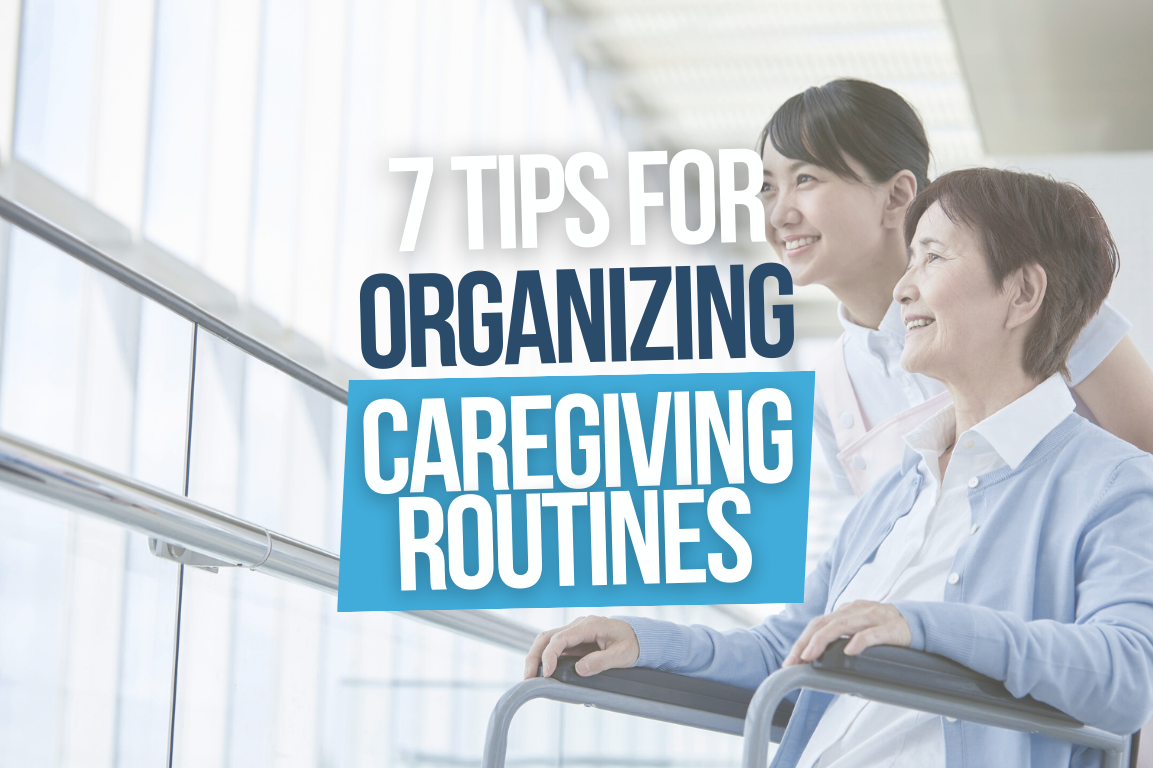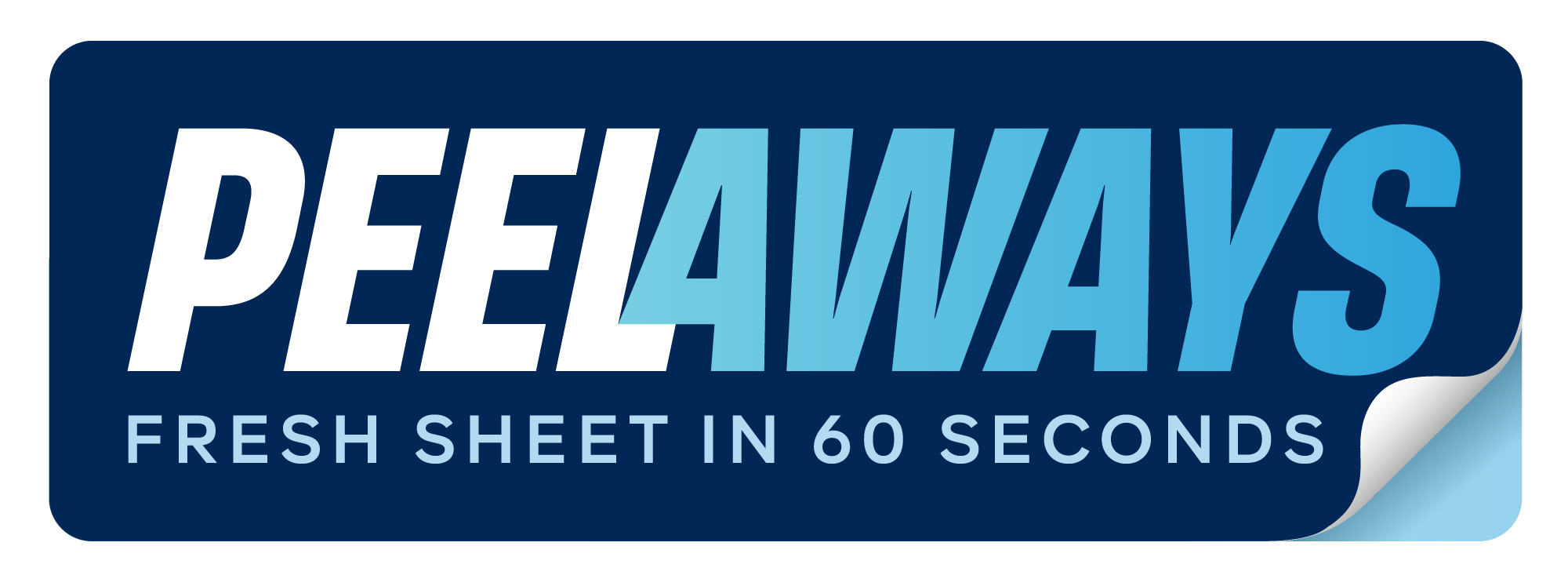7 Tips for Organizing Caregiving Routines

Caregiving can feel overwhelming, but small changes can make it easier for both you and your loved one. By organizing tasks, managing schedules, and setting up efficient systems, you can reduce stress and improve care quality. Here’s a quick overview of the seven tips covered:
- Prioritize Tasks: Categorize daily activities into urgent, important, and flexible to focus on what matters most.
- Medication Management: Use tools like pill organizers, digital reminders, and master medication lists to stay on track.
- Dedicated Calendars: Keep a separate caregiving calendar, color-code tasks, and share schedules with family members.
- Organized Care Spaces: Create clutter-free, accessible areas with labeled bins and supply stations.
- Specialized Products: Use time-saving items like disposable bed sheets to simplify care routines.
- Health Journals: Record symptoms, mood, and care details to spot patterns and share with doctors.
- Clear Communication: Establish group chats, shared calendars, and backup plans for emergencies.
These steps can help you stay organized, save time, and provide better care while maintaining your own well-being.
How Can Routines Help With Caregiver Time Management? - Elder Care Support Network
Benefits of Organized Caregiving Routines
Creating structured caregiving routines can bring a sense of calm and control to what might otherwise feel like an overwhelming day. When your caregiving schedule is well-organized, it not only helps you provide better care but also protects your own mental and emotional well-being.
A well-structured system can make your daily life more efficient, reduce emotional strain, and minimize unexpected challenges. Plus, it cuts down on wasted time spent searching for misplaced items or handling preventable crises, giving you room to focus on what truly matters.
Less Stress and Fewer Missed Tasks
When you don't have to store every little detail in your memory, life becomes a lot less stressful. An organized system can handle the details for you - like tracking medication schedules or reminding you about follow-up appointments - so you can focus on caregiving without constant worry.
Missed tasks can lead to unnecessary stress. Forgetting to refill a prescription or skipping a therapy session can create last-minute headaches. Using tools like visual reminders, medication charts, and a central calendar can help you stay on top of everything without feeling overwhelmed. Designating specific areas for supplies also ensures you're not scrambling to find what you need in a pinch.
Clear routines can even improve your sleep. Many caregivers find it easier to unwind at night knowing they have a reliable system in place for the next day.
Better Efficiency and Predictability
Organized routines make daily tasks faster and less stressful. For example, having supplies neatly arranged means tasks like changing bedding become much easier. Products like PeelAways disposable waterproof bed sheets, which feature a peel-away multi-layer design, can save time and effort. They eliminate the need to lift heavy mattresses and reduce laundry, all while maintaining a clean and hygienic environment.
This kind of efficiency has a ripple effect. Predictable schedules are especially reassuring for care recipients, particularly those with dementia or cognitive challenges, as they thrive on consistency and familiarity.
An orderly system also prevents unnecessary purchases and frees up time for more meaningful moments - whether that's a peaceful walk, quality time with your loved one, or simply taking a well-deserved break. Plus, when your daily tasks are under control, you're better equipped to handle unexpected situations like medical emergencies or sudden changes in care needs.
sbb-itb-45288fe
7 Practical Tips for Organizing Caregiving Routines
Here are seven actionable ways to bring structure and ease into your caregiving routine.
Identify and Prioritize Daily Caregiving Tasks
Start by listing everything you do in a typical day - from morning medications to evening routines. Then, break these tasks into three categories: urgent (needs immediate attention), important (should be done today), and flexible (can be shifted if necessary).
Time-blocking can be a lifesaver here. Group similar tasks together to minimize transitions and avoid overlap. For example, you might set aside time in the morning for medication and hygiene-related care, leaving afternoons for errands or appointments. This method helps you maintain clear boundaries and prevents tasks from spilling into one another.
Set Up Medication Management Systems
Managing medications can feel overwhelming, but a few tools can make it manageable. Use a weekly pill organizer or set digital reminders to ensure medications are taken on time.
Keep a visible medication calendar to track refills - most pharmacies need 2-3 days' notice. Create a master list that includes medication names, dosages, prescribing doctors, and pharmacy contacts. This list will be invaluable during medical visits or emergencies.
If you're juggling multiple prescriptions, ask your pharmacist about syncing refill dates to reduce trips.
Use Dedicated Calendars and Planners
A separate caregiving calendar can help you stay on top of appointments and tasks without them getting lost in the shuffle of daily life. Whether you prefer a large wall calendar or a digital tool like Google Calendar, consistency is key.
Color-coding is a great way to differentiate tasks and appointments. For example, use one color for medical visits and another for personal errands. If you're sharing caregiving duties with others, a shared digital calendar like Google Calendar or Apple's Family Calendar allows everyone to stay updated in real time, avoiding scheduling conflicts.
Organize Care Spaces and Reduce Clutter
Streamline your care environment by creating efficient, organized spaces. For example, set up a bedside caddy with essentials like tissues, hand sanitizer, and medications for easy access. Use labeled containers to group supplies by category - keep first aid items in one bin, incontinence supplies in another, and cleaning items in a third.
Consider creating a central supply station in a cabinet or closet. Tape an inventory list inside the door to track what needs restocking. Clear out unnecessary furniture or decorations that could create obstacles, especially if mobility aids like walkers or wheelchairs are in use. Wide, open pathways not only make caregiving tasks easier but also reduce stress.
Use Specialized Care Products for Efficiency
The right products can save time and effort. For example, PeelAways disposable waterproof bed sheets offer a practical solution for managing incontinence. Their multi-layer design allows you to peel away the top layer for a quick refresh, eliminating the need to strip and remake the bed in the middle of the night.
These sheets come in various sizes, like Cot and Twin XL, and offer up to seven layers for extended use. They're fully waterproof yet breathable, ensuring comfort while preventing cross-contamination. Products like these can significantly cut down on laundry and stress, especially when managing frequent accidents or multiple care recipients.
Keep Health and Care Journals
Tracking daily symptoms, mood changes, appetite, and sleep patterns can provide critical insights during medical appointments. Instead of relying on memory, you'll have detailed records to share with doctors.
Use a notebook or smartphone app to jot down observations. Over time, patterns may emerge, helping you identify triggers or monitor how well medications are working. Journaling can also be a helpful outlet for your own emotions - recording your feelings and stress levels can give you a clearer picture of when you might need extra support.
Set Up Clear Communication and Backup Plans
Establish a dedicated communication channel for caregiving updates, such as a group text or a shared calendar. Weekly family check-ins can also help everyone stay on the same page about care plans and responsibilities.
Prepare for the unexpected by creating backup plans. For instance, who can step in if you’re sick or unavailable for an appointment? Keep a list of family members, friends, or professional services who can provide temporary help, along with their contact details and any specific instructions.
Additionally, have an emergency sheet with essential medical information on hand. Store copies in your car, purse, and near the phone so you're ready to act quickly in a crisis. These systems ensure continuity of care and reduce stress when surprises arise.
Conclusion
Having effective organizational systems in place can make caregiving far less overwhelming. The seven strategies mentioned earlier help simplify daily responsibilities and ease the emotional toll. They create a solid framework for delivering steady, reliable care.
Even small adjustments can bring noticeable improvements. For instance, a study in the Journal of Gerontological Nursing revealed that caregivers who adopted structured routines and organizational tools saw a 30% drop in missed medication doses and a 25% reduction in emergency incidents[1]. These aren't just statistics - they reflect real families finding greater peace of mind and stability in their caregiving routines.
Start by addressing the area that feels most challenging - whether it’s managing medications or staying on top of appointments. Focus on that one aspect first. Once you’ve got a system in place that works, you can move on to the next area of concern. Gradual changes are often the most sustainable.
The benefits of organization are backed by evidence. From minimizing clutter to using practical tools like PeelAways disposable bed sheets for incontinence care or maintaining detailed health logs, these steps can enhance the care you provide. They also help create a calmer, more respectful environment for your loved one while giving you the mental space to focus on what truly matters - offering compassionate, attentive care.
With more than 53 million Americans providing unpaid care for adults or children, you’re far from alone in this experience[1]. There are resources, products, and strategies designed to support you. Taking that first step toward better organization is a meaningful choice that benefits both you and your loved one, improving your well-being and the quality of care you provide.
FAQs
What’s the best way to prioritize caregiving tasks to make sure the most important needs are addressed first?
To manage caregiving tasks efficiently, start by addressing the most urgent and essential needs - things like managing medications, ensuring proper hygiene, and maintaining safety. One practical way to stay organized is by using the 4Ds method: Do, Defer, Delegate, Drop. This approach helps you sort through tasks, ensuring the most critical ones are handled right away.
Another helpful strategy is creating a daily task list. This allows you to clearly see which responsibilities need immediate attention and which can be postponed. And while caregiving can be demanding, don’t overlook your own well-being. Taking time to care for yourself is essential - it gives you the strength and energy to handle daily challenges. Leaning on family, friends, or local caregiving resources can also lighten the load and make managing everything a bit easier.
How can I effectively manage multiple medications and stay on top of refills?
Managing several medications doesn’t have to be overwhelming. There are practical ways to stay on top of things. For starters, medication management apps or digital tools can be a lifesaver. They not only help you set reminders but also keep an up-to-date record of all your prescriptions. If you prefer something offline, a simple physical chart or notebook can work just as well to track doses and schedules.
When it comes to refills, pharmacy synchronization services can make life easier. These services align all your medication refills to happen on the same day each month, cutting down on multiple trips to the pharmacy and reducing the chances of missing doses. Staying organized like this can make a big difference in sticking to your routine and feeling more in control.
What’s the best way to prepare a backup plan for caregiving in case of emergencies?
Creating a backup plan for caregiving is a smart way to make sure your loved one is cared for, even during unexpected situations. Start by outlining the key responsibilities - things like medication schedules, daily routines, and any specific care needs. Then, reach out to trusted friends, family members, or professionals who could step in temporarily if needed.
Put together a detailed guide that includes emergency contacts, medical details, and step-by-step instructions. Make sure this guide is easy to find and update it regularly to keep it accurate. You might also want to include legal and medical directives to simplify decisions if you're unavailable. Taking the time to review and practice the plan with everyone involved ensures they’re confident in their roles and ready to help when the time comes.
Related Blog Posts
- 7 Essential Tips for Nighttime Incontinence Care
- How Disposable Bed Sheets Reduce Caregiver Stress
- Checklist for Streamlining Incontinence Care Tasks
- Checklist for Setting Up a Recovery Bed at Home
Comments
0

SAVE MONEY & WATER
Professionals & Institutions save a fortune on labor/laundry.

SUPERIOR COMFORT
The first thing our customers notice is how soft our sheets are.

100% WATERPROOF
Each layer is 100% Waterproof, perfect for spills and accidents

SAVE TIME
Change the sheet in under 1 minute without stripping the bed.




Leave a comment